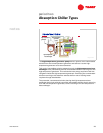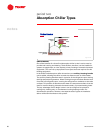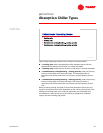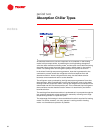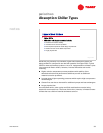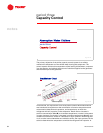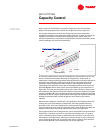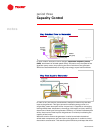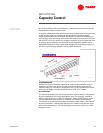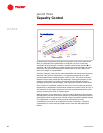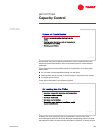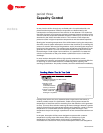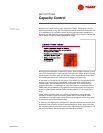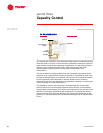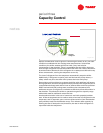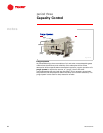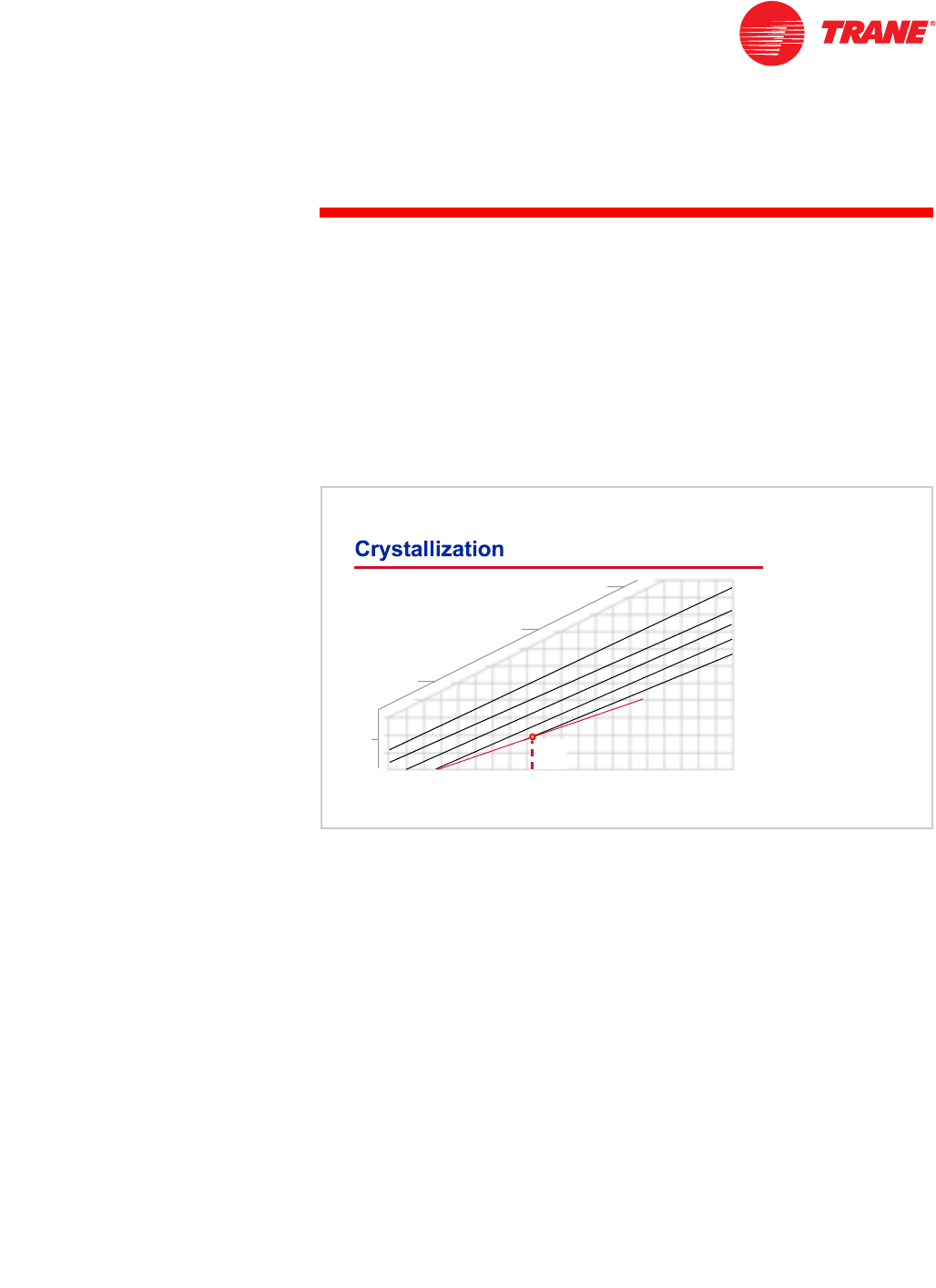
TRG-TRC011-EN 37
period three
Capacity Control
notes
out of the condition called crystallization—a solidification of the bromide salt.
Crystallization will be discussed next.
In the past, absorption water chillers would vary the heat input to the generator
as the primary means of maintaining the desired leaving-chilled-water
temperature. Because the absorption refrigeration cycle has the capability to
store energy, using the energy valve as the sole method of control would cause
the chiller to react very slowly to a change in capacity. By varying the flow rate
of solution to the generator and absorber sprays, especially with the use of
adjustable-frequency drives, recent chiller designs are now able to react very
quickly to ever-changing load and cooling-water conditions.
Crystallization
Lithium bromide is chemically classified as a salt. In its solid state, it has a
crystalline structure and, like most salts, is soluble in water. With any salt
solution, there is a “saturation” temperature for a given concentration, below
which the salt begins to leave the solution as a solid. This is called
crystallization.
The saturation temperature for various solution concentrations is represented
by the crystallization line on the equilibrium chart. For example, consider a
lithium bromide solution of 65% concentration. Above 123°F [50.6°C], all salt
remains dissolved in the solution. If, however, the solution concentration
remains the same and the temperature falls below 123°F [50.6°C], the solution
becomes saturated—meaning that the solution contains more salt than it can
hold at that temperature—and the salt begins to leave the solution in a solid
crystalline form.
6
5
6
5
6
0
6
0
5
5
5
5
5
0
5
0
4
0
4
0
50°F
50°F
[10°C]
[10°C]
100°F
100°F
[37.8°C]
[37.8°C]
150°F
150°F
[65.6°C]
[65.6°C]
200°F
200°F
[93.3°C]
[93.3°C]
crystallization
line
crystallization
line
15
15
psia
psia
[103.4
[103.4
kPa
kPa
]
]
5
5
psia
psia
[34.5
[34.5
kPa
kPa
]
]
1
1
psia
psia
[6.9
[6.9
kPa
kPa
]
]
0.1
0.1
psia
psia
[0.69
[0.69
kPa
kPa
]
]
LiBr
LiBr
solution
solution
v
a
p
o
r
p
r
e
s
s
u
r
e
v
a
p
o
r
p
r
e
s
s
u
r
e
concentration
concentration
concentration
solution temperature
solution temperature
123°F
123°F
[50.6°C]
[50.6°C]
Figure 44



